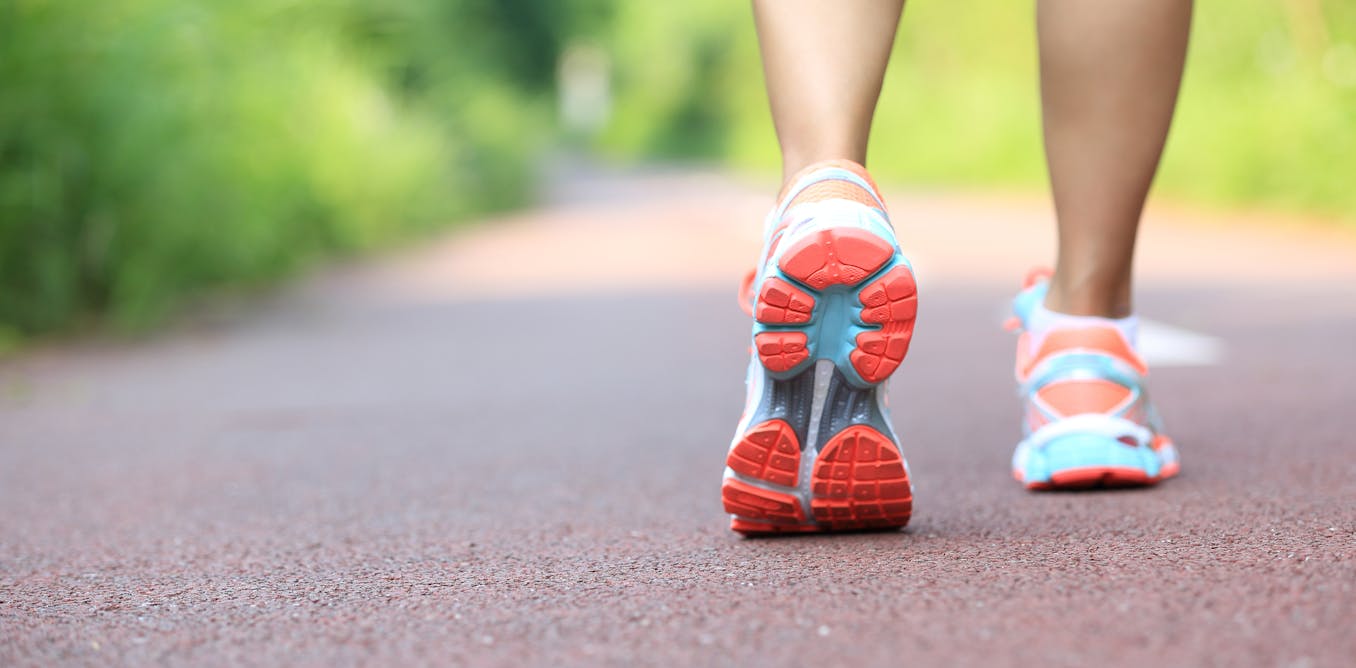Walking doesn’t require any special equipment or gym memberships, and best of all, it’s completely free. For most of us, walking is something we do automatically. It doesn’t require conscious effort, which is why many of us don’t remember the health benefits of walking. But what happens if we stop walking on autopilot and start challenging our brain and body by walking backwards? This change in direction not only demands more of our attention, but can also bring additional health benefits.
Physical activity doesn’t have to be complicated. Whether you’re regularly active or not, even a ten-minute walk a day can provide a number of health benefits and can count toward the World Health Organization’s recommended minimum of 150 minutes of aerobic activity per week.
However, walking is more complicated than many of us think. Standing upright requires coordination between our eyesight, vestibular (sensations linked to movements such as spinning, turning, or moving fast) and proprioceptive systems (awareness of where our bodies are in space). When we walk backwards, our brains take longer to process the additional demands of coordinating these systems. However, this higher level of challenge brings with it greater health benefits.
One of the best-studied benefits of walking backwards is improve stability and balance. Walking backwards can improve forward gait (how a person walks) and balance for healthy adults and those with knee osteoarthritis. Walking backwards causes us to take shorter and more frequent steps, which improves the muscular endurance of the lower leg muscles and reduces the load on the joints.
Adding changes in incline or decline can also alter the range of motion of joints and muscles, offering pain relief for conditions such as plantar fasciitis – one of the most common causes of heel pain.
The postural changes brought about by walking backwards also use more of the muscles that support the lumbar spine, suggesting that walking backwards might be a particularly beneficial exercise for people with chronic low back pain.
Even walking backwards has been used to identify and treat balance and gait speed in patients with neurological conditions or who continue to chronic stroke.
But the benefits of changing directions aren’t just therapeutic: Interest in moving backwards has led researchers to discover other benefits.
While walking normally can help us maintain a healthy weight, walking backwards can be even more effective. The energy expenditure in walking backwards is almost 40% higher to walk at the same speed forward (6.0 Mets vs. 4.3 Mets – a metabolic equivalent (Met) is the amount of oxygen consumed while sitting at rest), with one study showing reductions in body fat for women who completed a six-week gait or backward run training program.
When we are confident in traveling backwards, progressing to running can further increase the demands. Although often studied as a rehabilitation tool, running backwards increases the strength of the crucial muscles involved with straighten kneewhich translates not only to injury prevention, but also to our ability to generate power and athletic performance.
Running backwards steadily decreases the energy we expend when running forward. These improvements in running economy they are even beneficial for experienced runners with already inexpensive running technique.
If walking backwards seems too easy, but space limitations affect your ability to run backwards, another way to increase the challenge even more is to start dragging weights. Increasing the overall load increases the recruitment of the knee extensors while placing heavy demands on the heart and lungs in a short space of time.
Ben Molyneux / Alamy Stock Photo
Carrying a sled and dragging it backwards carries a low risk of injury, as the most likely result if we are overtired is that the sled won’t move. But with lighter weights, this type of exercise can produce an adequate level of resistance to significantly stimulate improvements in lower extremity powerwith drag weights as low as 10% of total body weight, leading to better sprint times between young athletes.
How to start
Walking backwards is simple, but that doesn’t mean it’s easy. So how can you add walking backwards into your fitness regimen?
When we walk backwards, we are more likely to miss obstacles and hazards that we could bump into or fall over, so for the sake of safety, it’s best to start indoors where you won’t bump into someone or outside in an open area. and flat. area.
Resist the temptation to contort your body and look over your shoulder. Keep your head and chest up as you reach your big toe back for each step, rolling your foot from toe to heel.
Once you’re more confident walking backwards, you can start to speed things up and even transition to a treadmill, making sure to use the guide rails when necessary. If you use weights, start light. Focus on multiple sets rather than long distances, and remember to maintain the integrity of your technique over a distance of no more than 20 meters to start with.
